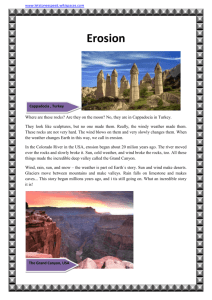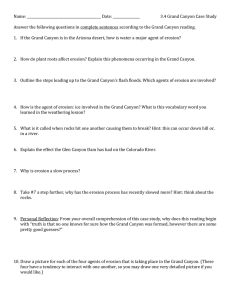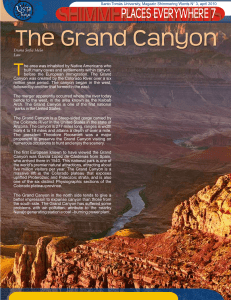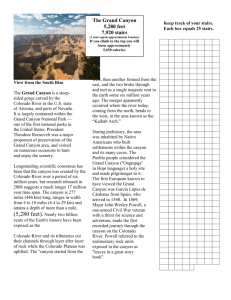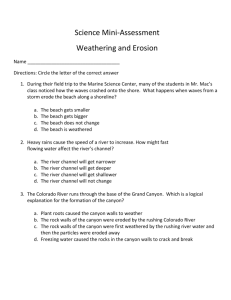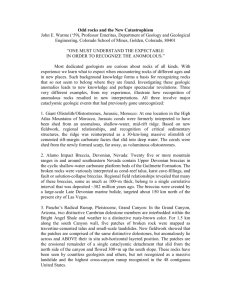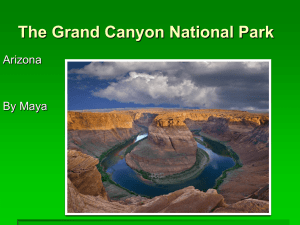Chapter 04 Web Exercises
advertisement
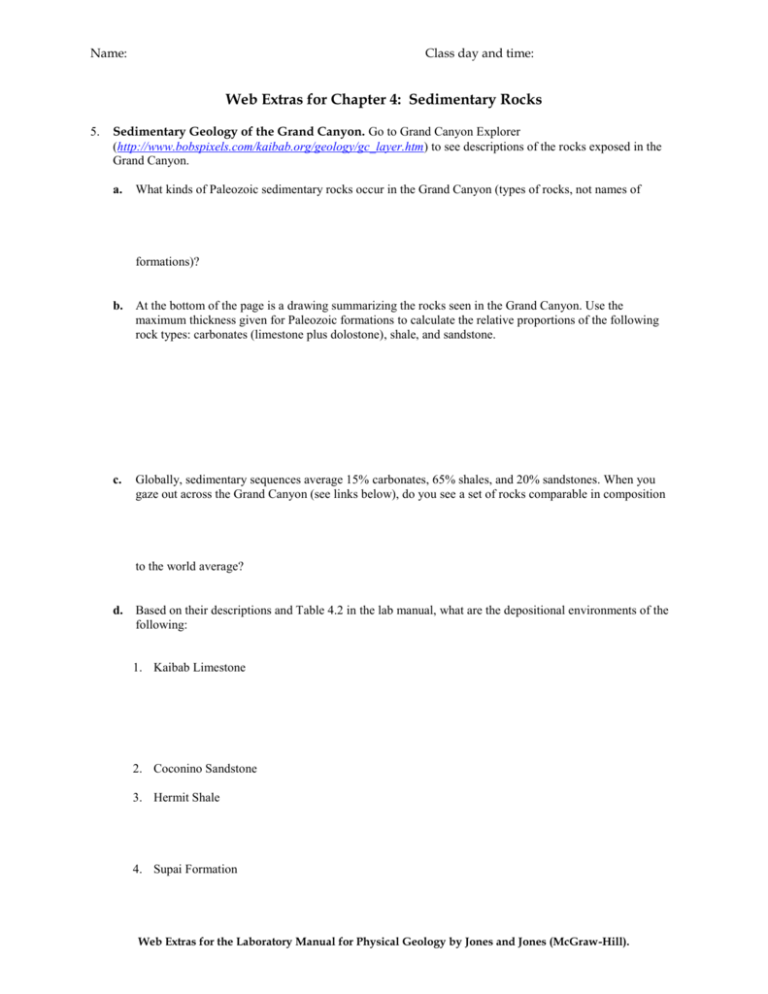
Name: Class day and time: Web Extras for Chapter 4: Sedimentary Rocks 5. Sedimentary Geology of the Grand Canyon. Go to Grand Canyon Explorer (http://www.bobspixels.com/kaibab.org/geology/gc_layer.htm) to see descriptions of the rocks exposed in the Grand Canyon. a. What kinds of Paleozoic sedimentary rocks occur in the Grand Canyon (types of rocks, not names of formations)? b. At the bottom of the page is a drawing summarizing the rocks seen in the Grand Canyon. Use the maximum thickness given for Paleozoic formations to calculate the relative proportions of the following rock types: carbonates (limestone plus dolostone), shale, and sandstone. c. Globally, sedimentary sequences average 15% carbonates, 65% shales, and 20% sandstones. When you gaze out across the Grand Canyon (see links below), do you see a set of rocks comparable in composition to the world average? d. Based on their descriptions and Table 4.2 in the lab manual, what are the depositional environments of the following: 1. Kaibab Limestone 2. Coconino Sandstone 3. Hermit Shale 4. Supai Formation Web Extras for the Laboratory Manual for Physical Geology by Jones and Jones (McGraw-Hill). 5. Temple Butte Limestone If you want to see pictures of the canyon, try www.bobspixels.com/kaibab.org and click on Photographs. Other links also show many of the great things you can see and do in and around the Grand Canyon. Web Extras for the Laboratory Manual for Physical Geology by Jones and Jones (McGraw-Hill).

